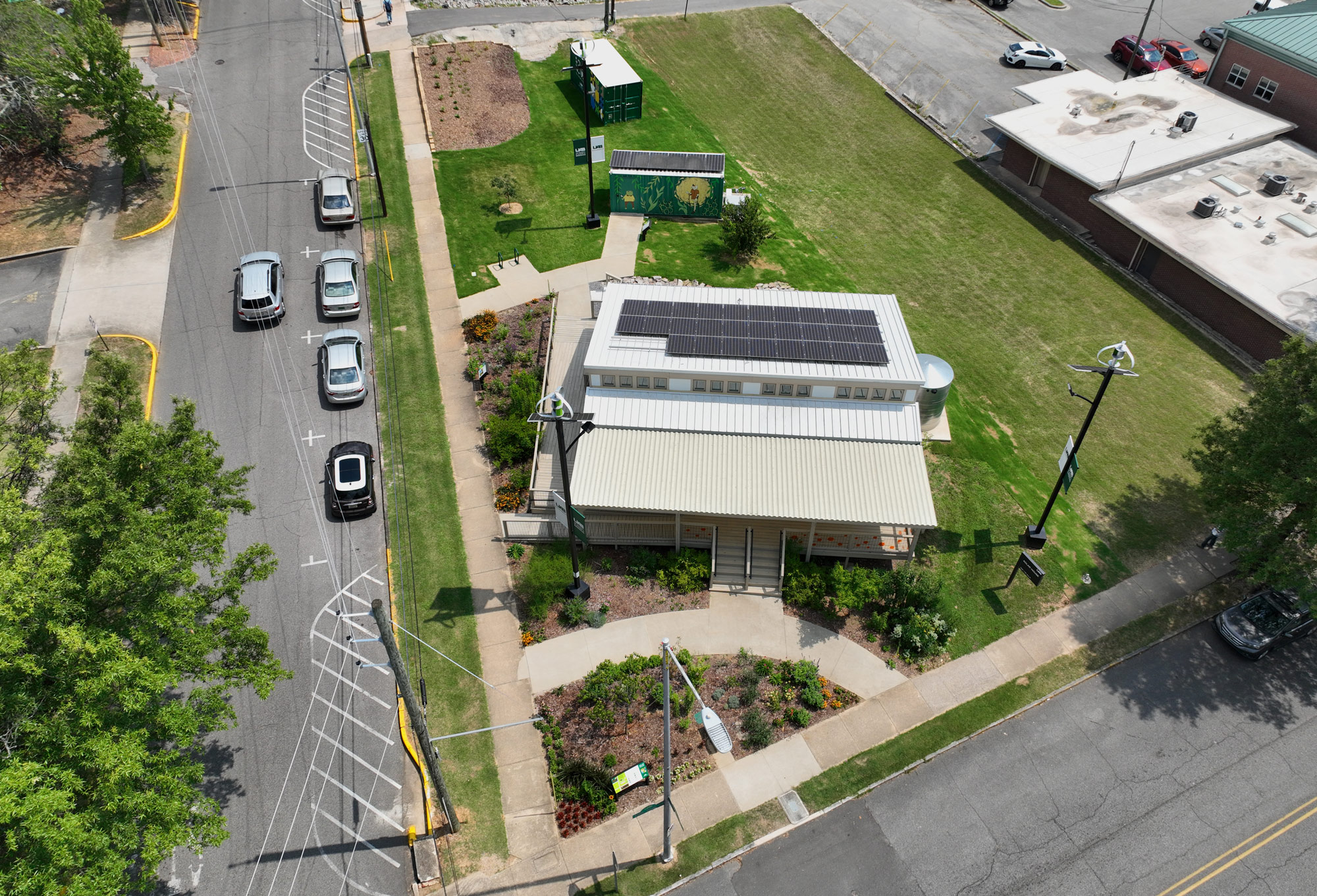UAB’s Solar House is powered by a remote microgrid. Also known as a mini-grid, a microgrid replicates the function of the large, utility-scale power grid, but only serves its nearby community. It combines energy production, energy storage, backup generation, and load management tools to offer the stability of a big grid while enabling energy independence and flexibility to the user. The microgrid at the UAB Solar House consists of four batteries that store power from the solar panels. When fully charged, the batteries can run the house for four days if there was no sunlight. For emergency purposes, the Solar House also has a natural gas generator.

UAB’s Solar House features a 9 kW array of rooftop solar photovoltaic (PV) panels. Unlike fossil fuels, which are finite, solar energy is sustainable, free and totally inexhaustible. It is also a non-polluting source of energy and does not emit greenhouse gases when producing electricity. The electricity produced by the solar panels on this house can supply more energy than the house consumes every day, which makes it a net-positive system.
Treating, heating, and transporting water requires a tremendous amount of energy. In total, the U.S. expends 4-6% of its electricity on water-related uses. Some municipalities, however, have particularly high demand and can use up to 30-40% of their electricity on water. Therefore, using untreated and locally sourced water not only saves money, but also reduces a city’s overall energy consumption. At the UAB Solar House, rainwater that runs off the roof is stored in a 2,500 gallon cistern to provide water for the gardens. A dedicated solar system runs the pumps for the cistern so that the rainwater is delivered where it is needed in the gardens. The cistern has a UV light inside to kill bacteria and mesh filter to eliminate debris.
Each fall, hundreds of millions of monarch butterflies migrate from the U.S. and Canada to spend winter in the mountains of central Mexico until conditions favor a return flight in the spring. The monarch migration is one of the world's greatest natural wonders, yet it is threatened by habitat loss at the overwintering grounds in Mexico and throughout breeding areas in the U.S. and Canada. Monarch waystations provide resources necessary for monarchs to produce successive generations and sustain their migration.
UAB’s Monarch Waystation features milkweed that is native to Alabama. When Monarchs pass through Alabama in the fall and spring, they rely on our native milkweed plants to house their eggs and feed their caterpillars when they hatch. Because milkweed is the only plant that caterpillars will eat, planting it in your garden at home can have a direct impact on the Monarch population as it passes through our state.

In 2020, UAB biology professor Winston Lancaster, Ph.D., started this garden to support the campus food pantry, Blazer Kitchen. The food pantry was founded in March 2017 to support members of the campus community facing food insecurity. These produce gardens are maintained by faculty, staff, and student volunteers.
The Community Gardens are available for UAB students, faculty, and staff to rent plots. UAB Community gardeners grow what they choose and maintain their own garden plots.
Bee populations in North America have been in severe decline since the 1980s, yet 1/3rd of the world’s food supply relies on pollination from bees. If their decline continues, it could have disastrous effects on food accessibility, rendering it impossible to grow the world’s most essential crops. UAB is a designated Bee Campus USA, a program that recognizes, supports, and encourages pollinator conservation on college and university campuses.
